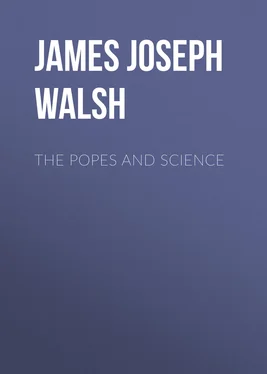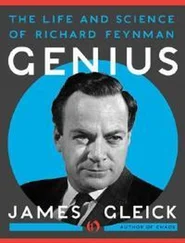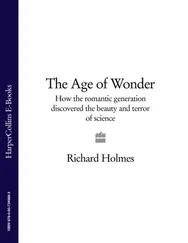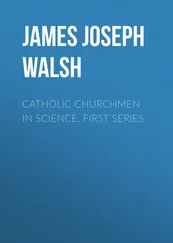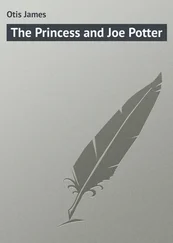James Walsh - The Popes and Science
Здесь есть возможность читать онлайн «James Walsh - The Popes and Science» — ознакомительный отрывок электронной книги совершенно бесплатно, а после прочтения отрывка купить полную версию. В некоторых случаях можно слушать аудио, скачать через торрент в формате fb2 и присутствует краткое содержание. Жанр: foreign_prose, foreign_religion, foreign_antique, на английском языке. Описание произведения, (предисловие) а так же отзывы посетителей доступны на портале библиотеки ЛибКат.
- Название:The Popes and Science
- Автор:
- Жанр:
- Год:неизвестен
- ISBN:нет данных
- Рейтинг книги:4 / 5. Голосов: 1
-
Избранное:Добавить в избранное
- Отзывы:
-
Ваша оценка:
- 80
- 1
- 2
- 3
- 4
- 5
The Popes and Science: краткое содержание, описание и аннотация
Предлагаем к чтению аннотацию, описание, краткое содержание или предисловие (зависит от того, что написал сам автор книги «The Popes and Science»). Если вы не нашли необходимую информацию о книге — напишите в комментариях, мы постараемся отыскать её.
The Popes and Science — читать онлайн ознакомительный отрывок
Ниже представлен текст книги, разбитый по страницам. Система сохранения места последней прочитанной страницы, позволяет с удобством читать онлайн бесплатно книгу «The Popes and Science», без необходимости каждый раз заново искать на чём Вы остановились. Поставьте закладку, и сможете в любой момент перейти на страницу, на которой закончили чтение.
Интервал:
Закладка:
[Footnote 7: The Mondino Myth, Medical Library and Historical Journal, 1906]
The law further decreed definite punishments for the practice of medicine without due warrant and violation of its regulations, and also regulated the practice of apothecaries. It is rather interesting to find that these were forbidden to share their profits with physicians, and the physicians themselves were not allowed to distribute their own medicines. In a word, practically every one of the problems in the practice of medicine which medical societies are trying to solve at the present moment, were also occupying the attention of the civil authorities about seven centuries ago. Anyone who reads this law will not be loath to believe that it represents the culmination of a series of efforts to regulate medical practice, and especially medical education, and that it was not merely a chance legal utterance that happened to touch a single important question for the first time. One of the paragraphs of the law even contains some clauses that would prevent fake medical schools and that establishes a board of medical examiners. This consisted of certain state officials and some professors of the art of medicine. In a word, medical education had reached a high grade of development, and medical practice was legally established on a high plane of professional dignity.
Salerno had already enjoyed a high reputation as a medical school for more than two centuries when Frederick's law was promulgated. It is true that we have no definite records of dissections done in the school. If these were not an uncommon occurrence, however, but came as did dissections later on, quite as a matter of course, the absence of such records, when we recall how liable to destruction were the meagre accounts of the university transactions of the time during the long period that has intervened and because of the many vicissitudes they were liable to, is not surprising. During the century following this decree there seems to be no doubt that dissections were done regularly, though perhaps not very frequently from our modern standpoint, at Salerno. Salerno, as we shall see in the chapter on The Papal Medical School, was always closely in touch with the ecclesiastical authorities, and especially with the Papacy. There was no hint of friction of any kind, either before or after this law of Frederick's. The question of ecclesiastical interference with dissection does not seem to have arisen at all, much less to have proved an obstacle to the development of medical science.
At the beginning of the fourteenth century the center of interest in anatomy and the matter of dissections shifts to Bologna. We have already discussed the question whether Mondino was the first to do public anatomies, and as to whether he performed only the few that by a narrow misunderstanding of certain of his own words have sometimes been ascribed to him. Professor Pilcher, in the article The Mondino Myth, already cited, is of the opinion, and gives excellent reasons for it, that Taddeo, the great Bolognese physician of the thirteenth century, who was Mondino's master, had done at least some dissections in Bologna. Personally I have long felt sure that Taddeo or Thaddeus, as he is sometimes called in the Latin form of his name, did not a few, but a number of dissections.
Professor Pilcher's account of him does not exaggerate his merits. I may say that he was one of the great Papal physicians of whom we shall have more to tell hereafter.
"Any comprehensive attempt to trace the real influences to which was due so great a step as a return to the practice of dissections of the human body, seems to me must be very defective if it failed to take into consideration the influence of such a man as Thaddeus (Italian Taddeo). That he was able to impress himself in the way in which history records that he did, both upon the general public and upon the scholastic foundations of Bologna, shows a strength of character and a mastery of the peculiar conditions of the moment in the fields of science and philosophy which made him a master and an inspirer. If he is to be considered in his proper historical light, as one who declares that the knowledge of the structure of the human body to a most minute degree is the foundation upon which all rational medicine and surgery must be built, then it is impossible to exaggerate the importance of the pivotal moment when, in the development of science, the human body began to be anatomized. Nor is any fault to be found with the custom which has crowned with the laurels of universal appreciation the names of those men who began and who continued anatomical study, who vulgarized the practice of dissection.
"In my own investigations and reflections upon the conditions which led up to this happy renewal of scientific search into the composition of the body of man, it has seemed to me that writers have hitherto fallen short of tracing through to its ultimate source, the earlier spirit of enthusiasm for knowledge, of insight into the problems of disease, and of contempt for traditionary shackles, to the influence of which, as shown by the master, Taddeo, the latter work of the pupil, Mondino, was in great measure due."
Medici, in his History of the School of Anatomy at Bologna, [Footnote 8] quotes Sarti on The Distinguished Professors of the University of Bologna for proof of Taddeo's familiarity with dissection. Von Töply does not think that this quotation is enough absolutely to prove that Taddeo had done dissections, yet it would be hard to understand it unless some such interpretation is made. Taddeo was asked to decide a medico-legal question with regard to a pregnant woman. He refused, however, with a modesty that might well be commended to medico-legal experts of more modern times, to answer the question decisively, because he had never made a dissection of a pregnant woman. Sarti argues that it is evident from this that he had dissected other bodies more easy to obtain than those of pregnant women, or else that he had had the opportunity to make observations on them when dissected by others.
[Footnote 8: Medici Compendio Storico Della Scuola Anatomica de Bologna, Bologna, 1857. ]
Certain of Taddeo's contemporaries must have had the incentive of his example to help them to a knowledge of human anatomy, for they surely could not have accomplished all that they did in surgery without experience in dissection, yet Taddeo was looked up to as a master by all of them.
Anyone who has read the contributions to surgery of William of Salicet and his great pupil Lanfranc, even if only what we give with regard to them in our chapter on Surgery during the Middle Ages, cannot but be impressed with the idea that they must have done human dissections. They do not mention this fact explicitly, but portions of their surgical works are taken up with the consideration of applied anatomy. They discuss the relations of various structures to one another, especially with reference to the surgery of them. Von Töply, in his Studies on the History of Anatomy in the Middle Ages, says that the anatomies written before William's chapters on applied anatomy, were most of them purely theoretic discussions meant to be guides for internal medicine, or else they were very short directions for those who undertook the practical work of the dismemberment of bodies, usually, however, with reference to animals rather than to human bodies. In William of Salicet we encounter, he says, for the first time a treatise on anatomy made with the deliberate purpose of its application to practical surgery. Everywhere William gives hints for surgical operations with special reference to the anatomical relations.
Puccinotti quotes from William of Salicet's surgery, written about 1270, a passage that shows how familiar this surgeon must have been with dissection. The nephew of Count Pallavicini received an arrow wound in the jugular vein and died within an hour. During his death agony he suffered from a peculiar form of rattle in his throat. It was thought that this might be due to the fact that the arrow had been poisoned. William was called in to decide this question, and found that there was nothing responsible for his death except the wound itself. He describes how he found the blood in the lungs and in the heart, and considers that the conditions that were present were due to the wound. Von Töply has suggested that William would have given more details had he actually examined these organs, but when the autopsy report is negative, such descriptive details are not usual even at the present time. If he had found reason for thinking that there was poison in the case, a careful description of the other organs would be necessary. The fact, however, that he was asked to decide such a question, would seem to indicate that he was supposed to have a knowledge of the normal appearances of human tissues when examined by dissection.
Читать дальшеИнтервал:
Закладка:
Похожие книги на «The Popes and Science»
Представляем Вашему вниманию похожие книги на «The Popes and Science» списком для выбора. Мы отобрали схожую по названию и смыслу литературу в надежде предоставить читателям больше вариантов отыскать новые, интересные, ещё непрочитанные произведения.
Обсуждение, отзывы о книге «The Popes and Science» и просто собственные мнения читателей. Оставьте ваши комментарии, напишите, что Вы думаете о произведении, его смысле или главных героях. Укажите что конкретно понравилось, а что нет, и почему Вы так считаете.
